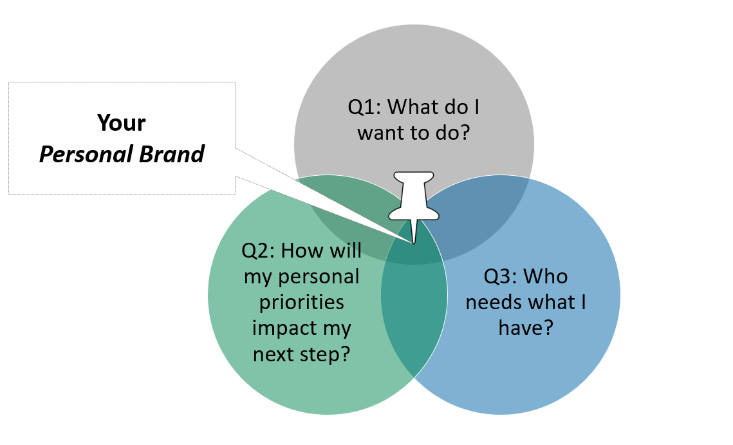ATD Blog
Are You Managing Your Healthcare Career or Is It Managing You?
Wed May 30 2018

Although C.S. Lewis is often credited with saying it, it was actually George Harrison who penned the lyrics “If you don’t know where you’re going, any road will take you.” It’s especially true when it comes to managing our own career development. Thus, the question: Are you managing your healthcare career or is it managing you?
In today’s dynamic environment, having a clear personal brand is expected. Your personal brand expresses who you are in terms of where you add value. It hooks your audience into wanting to talk to you—because the discussion is where the decision happens.
In our book, FOCUS: Creating Career + Brand Clarity, 2nd Edition, my co-author Debra Fehr Heindel and I lay out a framework for how to determine your next best step and message it (develop a personal brand). To help you get there, we’ll explore a framework called the Career Management Diagnostic in the webcast on June 25 at 1 p.m. ET.
A personal brand is the difference between this:
An energetic healthcare executive with 20+ years’ operations management experience in several business sectors including healthcare and pharmaceuticals.
And this:
Visionary Healthcare Executive
Improve Patient Quality & Care | Utilize Fqhc As Er Diversion | Maximize Healthcare Reimbursements
The latter speaks to how this healthcare executive has met the challenges that face hospitals.
How do you build a personal brand? Because it starts with having focus on your destination, there are three universal questions that need to be answered. These three questions apply if you're considering any of the following:
an internal promotional opportunity—pursuing a promotion from clinical quality management and operations into a C-level role
a move outside your current organization—opening your own healthcare practice, or expanding your scope of care to another healthcare institution
a reinvention—moving away from a career in healthcare manufacturing leadership to the nonprofit sector, becoming an expert in medical adherence
the “second act” (active retirement)—downshifting from leading a practice to teaching in a medical program
an entrepreneurial path—switching from being on the consumer side to becoming a national diagnostic medical scientific liaison consultant.
The three questions are:
What do I want to do?
How will my personal priorities, at this juncture in my career, impact my next step?
What’s the profile of the audience that needs what I have?

To be clear, these three questions must be answered in context of the other. None of them can stand in isolation. The question, “What do I want to do when I’m at my best?” must be answered based on the demands of the marketplace.
The framework will help you determine where you need to spend your time gathering the decision-grade data that will allow you to create focus and develop your messaging. Process-wise, the goal is for you to identify and record the answers you already have, so that any investment of time is spent on answering the questions to which you don’t yet have answers.
Question #1: What Do I Want to Do?
It isn’t asking about all the things you can do. That’s not the same question. It’s about where you’re at your best, because that is where you are the most marketable.
To get started, an easy exercise is to write examples of your experiences and look for patterns or themes. If you’re familiar with DDI International’s Targeted Selection model for Behavior Based Interviewing, you likely know their STAR acronym.
S – Situation
T – Task
A – Action
R – Result
Using ideas from performance reviews, experiences of which you’re most proud, or requirements from a position description for a coveted role, write out your own example STAR stories. Embedded in the stories, you’ll find patterns or themes that speak to where you’re at your best.
It is important to write the stories out. When reflecting on experiences, we often focus on the details of those experiences rather than the patterns. It’s not being able to see the forest for the trees.
For this process, you need to step back to get a broader focal point so you have data to analyze. The goal is to help you describe the patterns in the forest growth, which you can’t do when you’re standing in the middle of the trees.
Question #2: How Will My Personal Priorities, at This Juncture in My Career, Impact My Next Step?
Based on where we are in our lives, at any given time, we each have personal priorities that influence our needs and our choices. These could be related to geography, financial requirements, values, organizational culture, and so on. Particularly when faced with multiple options, the clearer you are about your priorities, the simpler it is to create focus.
Again, rather than simply reflecting on your priorities, write them down and rank-order them. It’s similar to purchasing a home. Your wish list might include a specific location, preferences for numbers of rooms, and/or proximity to certain schools. If everything on the wish list isn’t viable in your price range, one of the priorities is likely to supersede the rest.
Question #3: Who Wants What I Have?
If this feels like a big question, it’s because it is. The question is really about the audience to which your skills and expertise are most relevant. Consider:
What’s the profile of the organization that needs your thought leadership, skills, and expertise? In other words, what organization is experiencing the problem (or pain) that you’re best at solving? For example, let’s say you’re a healthcare manufacturing leader who maximizes profitability through system implementation and continuous process improvements. The large, local hospital system isn’t going to find you a compelling candidate, because they don’t need (or want) what you have to offer in manufacturing.
Who’s the ultimate stakeholder who’s being kept awake at night by that issue? The stakeholder might be the hiring manager or decision maker, but not always. It’s the person whose life you’ll make easier when you do what you do best.
By creating focus about what you want to do and understanding the audience to whom it’s relevant, you can craft messaging that will invite conversation. Are you ready for the career development question: “What do you want to do?” If not, it’s likely your career is managing you.
